Where is Rwanda?
About Rwanda
The Land
The People
Life and Death
Health, Energy and the Environment
Education and Work
Travel, Communication and the Media






Back to the Flags of Africa page

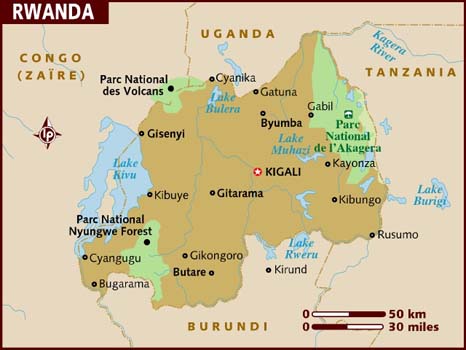


Rwanda is a below-average size country in central Africa.
Rwanda is landlocked country with no coastal border.
The land is mostly grassy uplands and hills.
The geographical coordinates for the centre of Rwanda, also known as lines of latitude and longitude, are:-
Latitude - 2 00S
Longitude - 308 00E
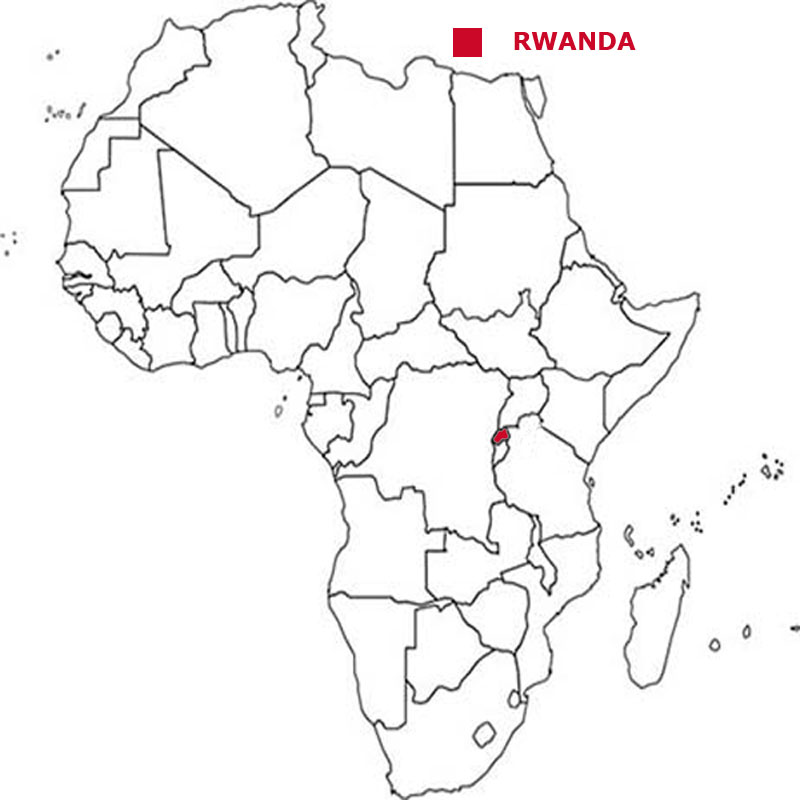

Check the weather in Kigali now.
This is the time in Kigali now
 The Rwandan flag is three horizontal stripes of sky blue, at the top, yellow and green with a golden sun with 24 rays in the top corner of the flag away from the
flagpole. Blue represents happiness and peace, yellow economic development and mineral wealth and green, hope of prosperity and natural resources. The sun is for
unity, as well as enlightenment and transparency from ignorance.
The Rwandan flag is three horizontal stripes of sky blue, at the top, yellow and green with a golden sun with 24 rays in the top corner of the flag away from the
flagpole. Blue represents happiness and peace, yellow economic development and mineral wealth and green, hope of prosperity and natural resources. The sun is for
unity, as well as enlightenment and transparency from ignorance.
Rwanda is a presidential republic with a president as head of state and head of the government.
In elections everyone over the age of 18 can vote.
The currency in Rwanda is the Rwandan franc. Rwanda is a member of the Commonwealth.
Kinyarwanda, French, English and Swahili/Kiswahili are the official languages.
Hear the National Anthem
These are the anthem words
We have already written our own history of England but are asking schools in Rwanda to provide us with a detailed history of
their own country. Check how here.
![]()
![]() Back to the top
Back to the top

The total land area of Rwanda is 24,668 sq kms which is the 47th largest in Africa.
Rwanda has lakes, rivers and canals which total 1,670 sq kms.
Rwanda has boundaries with 4 countries
- Burundi 315 kms
- Tanzania 222 kms
- Democratic Republic of Congo 221 kms
- Uganda 172 kms
Rwanda has no coastline.
The highest point in Rwanda is Volcan Karisimbi at 4,519 metres.
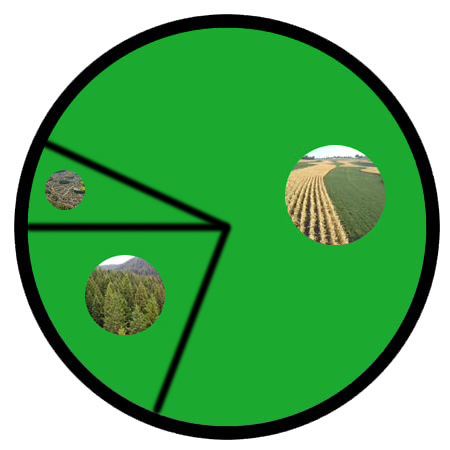

The total population of Rwanda is 12.19 million people, making it the 25th largest country in Africa by population.
Of this number 6.23 million are females and 5.96 million are males.
A person from Rwanda is called a Rwandan.
To be a citizen of Rwanda, your father must be a citizen of Rwanda. If your father is stateless or unknown, the mother must be a citizen of Rwanda.
It is not sufficient to be born in Rwanda. You have to live in Rwanda for 10 years before you can begin to apply for citizenship.
The largest five cities in Rwanda, by population are:-
- Kigali 745,261 people
- Butare 89,600
- Gitarama 87,613
- Ruhengeri 86,685
- Gisenyi 83,623
 Each little Owlbut is 1 person and
the big yellow rectangle is 1 sq km. After a while you can compare countries and see which ones are the most crowded. Remember it is only an average as
more people live closer together in towns and cities than in villages out in the country.
Each little Owlbut is 1 person and
the big yellow rectangle is 1 sq km. After a while you can compare countries and see which ones are the most crowded. Remember it is only an average as
more people live closer together in towns and cities than in villages out in the country.
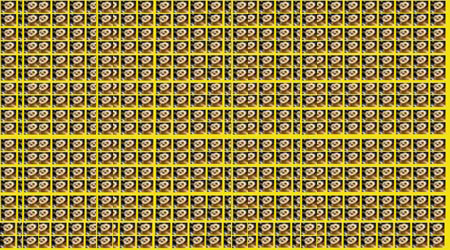
17.2% of the people live in cities or towns.

The birth rate in Rwanda is 29.8 births per 1,000 of population
The death rate in Rwanda is 6.3 deaths per 1,000 people.
Check this against the birth rate. If the death rate is higher than the birth rate then
the population will decrease unless immigrants arrive in the country.
There are 4.0 deaths of girls under 1 year per 1,000 of births and 3.3 deaths of boys.
The median age for females is 26.2 and for males is 32.0. The median age is that age which divides the population exactly in half so there are the same number
of people above the median age as below it.
The average age of a woman when she has her first child is 23.0.
The elderly dependency ratio is 5.0. This is the number of elderly people (ages 65+) per 100 people of working age (ages 15-64).
The potential support ratio is 20.1. This is the number of working-age people (ages 15-64) per one elderly person (ages 65+). As a population ages, the potential support ratio tends to fall, meaning there are fewer potential workers to support the elderly.
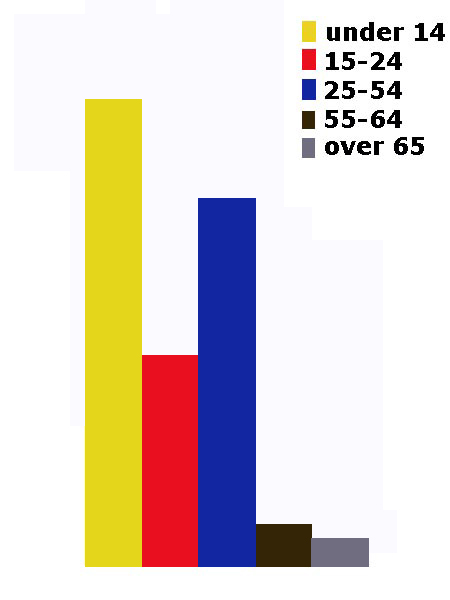
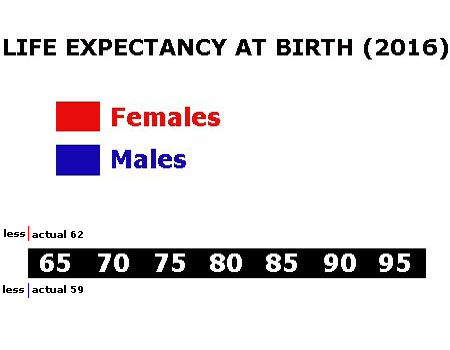

Rwanda spends 7.5% of its total income on health care.
There are 0.13 doctors per 1,000 people.
We have no figures for the number of hospital beds per 1,000 people.
5.8% of the population are estimated as obese.
86.6% of the urban population and 71.9% of the rural population have drinking water that is either piped into their home or they have access to a public tap, a protected borehole, well, spring or
protected rainwater collection facility.
58.5% of the urban population and 62.9% of the rural population have access to a flushing toilet that is connected to a sewer, a pit latrine (that is a
permanent hole in the ground that is looked after) or a composting toilet.
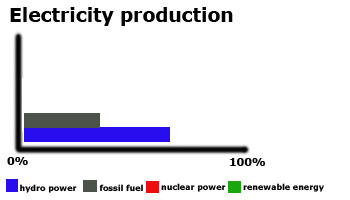
Rwanda releases 0.8 million metric tons of carbon dioxide by burning fossil fuels in the process of producing and consuming energy. This puts it as the 43rd highest in Africa.

Rwanda spends 3.2% of its total income on education.
Children usually start school at age 4 in Rwanda. Primary education is for six years until age 13 and secondary education must continue till 16 but can go on to 18/19. This may be followed
by further education at a university or college.
Generally the school year consists of 3 terms and starts in the middle of January and finishes at the beginning of November. There is usually a 2 week
break at the beginning of April and a 4 wwek break from mid-July to mid-August.
68.0% of females and 73.2% of males are able to read and write by the age of 15.
22.6% of all people aged between 16 and 24 are not in work. Among females 24.8% are unemployed while with males 20.6% can't find work.
The total number of people available for work in Rwanda is 6.23 million.
 They work in the following sectors.
They work in the following sectors.
- Agriculture includes farming, fishing and forestry work
- Industry includes mining, manufacturing, construction and energy workers
- Services is everything else

There are 4 paved airports in Rwanda, which is the 39th highest number in Africa.
![]()
There are no railways in Rwanda.
![]()
There are 4,700 kilometres of roads in Rwanda, which means Rwanda is in 42nd place for the most kilometres of roads in Africa.
![]()
There are 1 major national newspaper in Rwanda.
There are 8.82 million mobile phone users.
Less than 1% of the people have a fixed landline.

3.72 million people have access to the internet at home via any device (computer or mobile).


